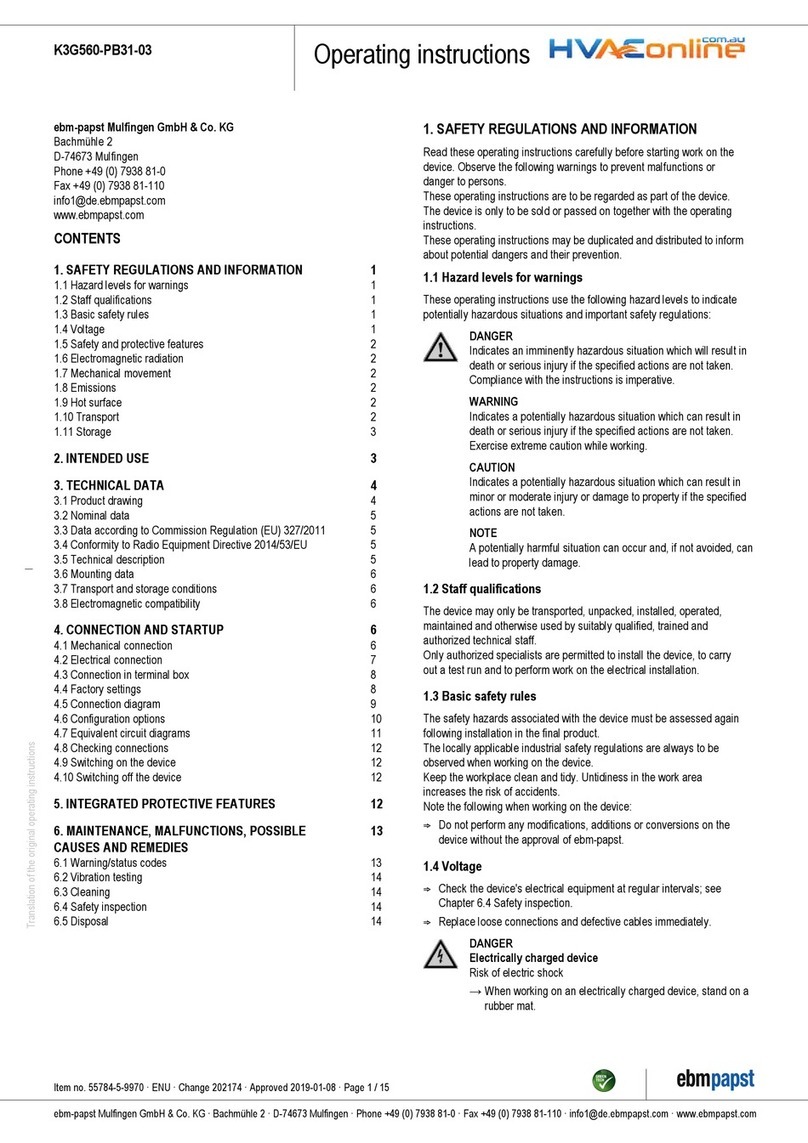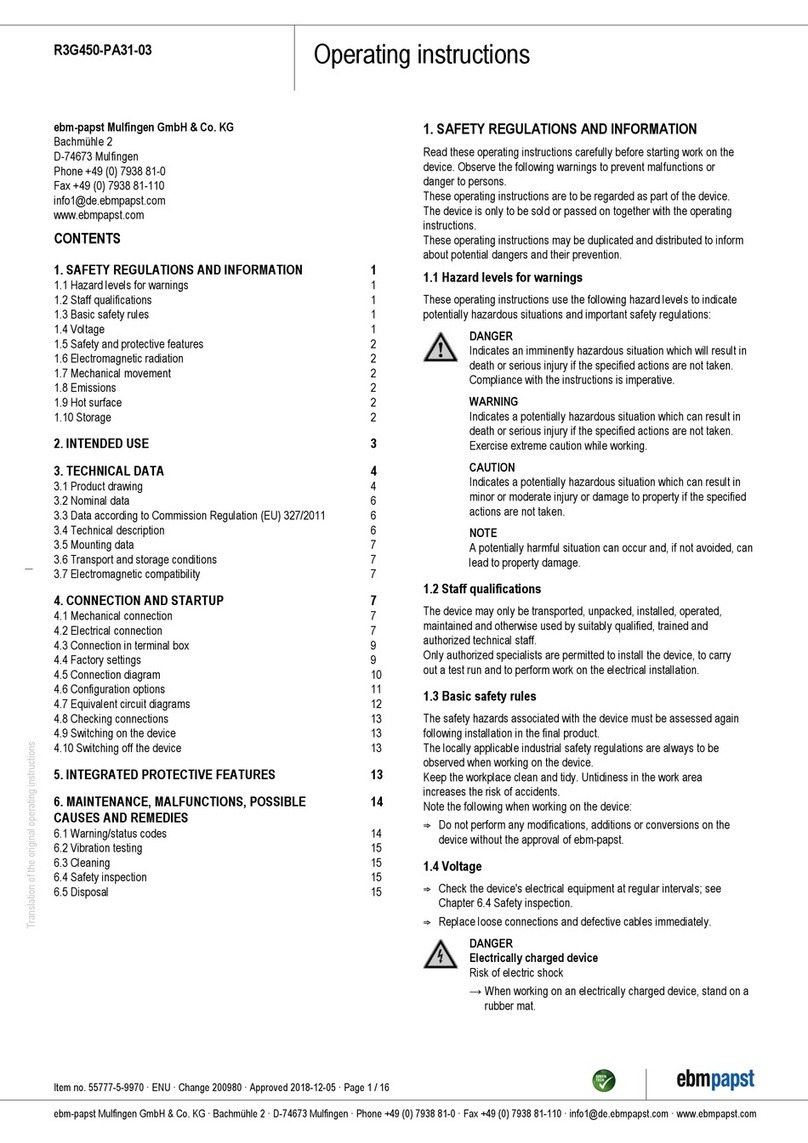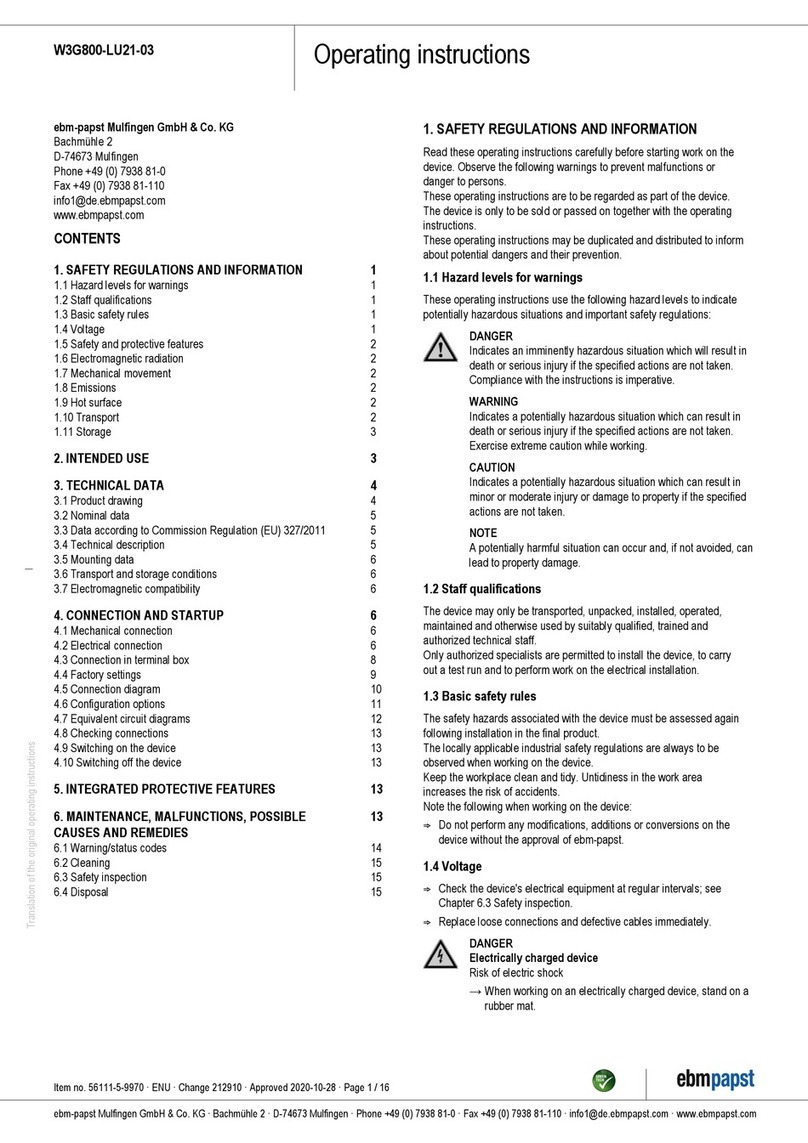
Operating instructions
W3G910-KU25-03
Translation of the original operating instructions
Protection class
assignment
I; If a protective earth is connected by
the customer
This component for installation may
have several local protection classes.
This information relates to this
component’s basic design.
The final protection class is based on
the component’s intended installation and
connection.
Conformity with
standards
EN 61800-5-1; CE
Approval CSA C22.2 No. 77 + CAN/CSA-
E60730-1; UL 1004-7 + 60730-1; EAC
Comment Maximum permissible operating altitude
4000 m above sea level according to
DIN 61800-5-1_2008_Sec. 4.3.6.4.1
overvoltage category II.
Up to 2000 m above sea level,
overvoltage category III applies.
;Use the device in accordance with its degree of protection.
Information on surface quality
The surfaces of the products conform to the generally applicable industrial
standard. The surface quality may change during the production period.
This has no effect on strength, dimensional stability and dimensional
accuracy.
The color pigments in the paints used perceptibly react to UV light over
the course of time. The product is to be protected against UV radiation to
prevent the formation of patches and fading. Changes in color are not a
reason for complaint and are not covered by the warranty. UV radiation
in the frequency range and the intensity of natural solar radiation has no
effect on the technical properties of the products.
3.5 Mounting data
Any further mounting data required can be taken from the product
drawing or Section Chapter 4.1 Mechanical connection.
Strength class of
screws
8.8
;Secure the screws against unintentional loosening (e.g. use self-
locking screws).
3.6 Transport and storage conditions
Max. permitted
ambient temp. for
motor (transport/
storage)
+80 °C
Min. permitted
ambient temp. for
motor (transport/
storage)
-40 °C
3.7 Electromagnetic compatibility
EMC immunity to
interference
According to EN 61000-6-2 (industrial
environment)
EMC interference
emission
According to EN 61000-6-3 (household
environment), except EN 61000-3-2 for
professionally used equipment with a
total rated power greater than 1 kW
If several devices are connected in parallel on the supply side
so that the line current of the arrangement is in the range 16 - 75
A, this arrangement conforms to IEC 61000-3-12, provided that
the short-circuit power Ssc at the connection point of the
customer system to the public power grid is greater than or
equal to 250 times the rated output of the arrangement. It is the
responsibility of the installation engineer or operator/owner of the
device to ensure, if necessary after consultation with the
network operator, that this device is only connected to a
connection point with an Ssc value greater than or equal to 250
times the rated output of the arrangement.
4. CONNECTION AND STARTUP
4.1 Mechanical connection
CAUTION
Cutting and crushing hazard when removing device
from packaging
Blades can bend
→ Carefully remove the device from its packaging, by the fan
housing. Strictly avoid shocks.
→ Wear safety shoes and cut-resistant safety gloves.
CAUTION
Device weighs over 25 kg! Heavy load when unpacking
device.
Risk of physical injury, such as back injuries.
→ Use suitable hoisting equipment to remove the device from
its packaging.
CAUTION
The blades of the impeller could be damaged.
→ Carefully set down the fan on a soft surface. Make sure the
blades are not subjected to load.
→ Following installation, make sure the impeller moves
easily and that the blades of the impeller are not deformed or
bent and do not catch at any point.
NOTE
Damage to the device from vibration
Bearing damage, shorter service life
→ The fan must not be subjected to force or excessive vibration
from sections of the installation.
→ If the fan is connected to air ducts, the connection should
be isolated from vibration, e.g. using compensators or similar
elements.
→ Ensure stress-free attachment of the fan to the
substructure.
;Check the device for transport damage. Damaged devices are not to
be installed.
;Install the undamaged device in accordance with your application.
Item no. 55565-5-9970 · ENU · Change 247619 · Approved 2021-11-25 · Page 6 / 16
ebm-papst
Mulfingen
GmbH
&
Co.
KG
·
Bachmühle
2
·
D-74673
Mulfingen
·
Phone
+49
(0)
7938
81-0
·
Fax
+49
(0)
7938
81-110
·
[email protected] ·
www.ebmpapst.com



































